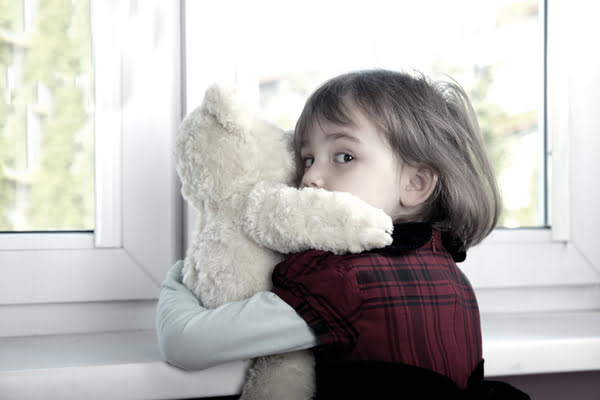Children experience trauma when they find themselves in a threatening situation. They’re particularly vulnerable to threats because they’re helpless and haven’t yet developed the ability to cope with frightening events.
When children experience less-than-ideal circumstances at home or in society at large, they face Adverse Childhood Experiences (ACEs).

However, not all adverse childhood experiences necessarily lead to trauma.
Like adults, children can also show resilience in the face of adverse experiences. But many sudden, unexpected, highly threatening, and persistent adversities can easily traumatize children.
Also, children differ in how they experience a potentially traumatic event. The same event may be traumatic for one child but not for another.
Childhood trauma occurs when a threat lingers in the child’s mind long after the threatening event has passed. Childhood trauma can lead to significant physical and mental health problems in adulthood.
All traumatic experiences that a child experiences up to the age of 18 can be classified as childhood trauma.
Types and examples of childhood trauma
Let’s now look at the different types and examples of trauma children can go through. If you’re a parent, this comprehensive list can help you audit your child’s life and assess if there might be problems in any area.
Of course, some of these types overlap, but the categorization is valid. I’ve included as many examples as possible. But the best thing a parent or a caregiver can do is never ignore the distress signals given by a child.
Any deviation from normal behavior, especially bad mood and irritability, could signify that the child has been traumatized.
1. Abuse
Abuse is any intentional or unintentional behavior by an external agent (abuser) that harms a child. Based on the type of harm caused, abuse can be:
Physical abuse
Physical abuse is harming a child physically. It includes behaviors like:
- Hitting a child
- Causing an injury
- Pushing and rough handling
- Throwing things at a child
- Using physical restraints (like tying them up)
Sexual abuse
Sexual abuse is when an abuser uses the child for their own sexual gratification. Sexually abusive behaviors include:
- Touching a child inappropriately (‘bad touch’)
- Saying sexually inappropriate things to a child
- Molestation
- Attempted sexual intercourse
- Sexual intercourse
Emotional abuse
Emotional abuse occurs when a child is harmed emotionally. While people take physical and sexual abuse seriously, emotional abuse is often seen as less severe, but it can be equally damaging.
Examples of emotional abuse include:
- Disparaging and putting a child down
- Humiliating
- Shaming
- Name-calling
- Gaslighting
- Excessive criticism
- Comparing a child to peers
- Threatening
- Overcontrolling
- Overprotecting
2. Neglect
Neglect means failing to attend to something. When parents or caregivers neglect a child, it can traumatize the child whose need for love, support, and care remains unmet.
Neglect can be physical or emotional. Physical neglect means ignoring the physical needs of a child. Examples of physical neglect include:
- Abandoning a child
- Not meeting the basic physical needs of a child (food, clothing, and shelter)
- Not providing healthcare
- Not taking care of a child’s hygiene
Emotional neglect occurs when the emotional needs of a child are ignored. Examples include:
- Not providing emotional support
- Being uninterested in a child’s emotional life
- Dismissing and invalidating a child’s feelings
3. Dysfunctional home environments
Less than ideal home environments negatively impact a child’s mental health and can lead to trauma. Things that contribute to a dysfunctional home environment include:
- Parents who’re constantly fighting
- Domestic violence
- One or both parents with psychological issues
- One or both parents struggling with substance abuse
- Parentification (having to take care of a parent)
- Separation from a parent
4. Dysfunctional social environments
A child needs a safe and functional home and a safe and functional society. Problems in society can cause problems in children. Examples of dysfunctional social environments include:
- Violence in the community (gang violence, terrorism, etc.)
- Bullying in school
- Cyberbullying
- Poverty
- War
- Discrimination
- Racism
- Xenophobia
5. Death of a loved one
The death of a loved one may affect children more than it does adults because children may find it challenging to deal with such an unexplainable tragedy. They may find it hard to wrap their little heads around the concept of death.
As a result, the tragedy may remain unprocessed in their minds, causing trauma.
6. Natural disasters
Natural disasters like floods, earthquakes, and hurricanes are a tough time for the whole community, and children are also affected.
7. Serious illness
A serious illness can impede many areas of a child’s life. Loneliness resulting from isolation can be particularly detrimental to a child’s mental health.
8. Accidents
Accidents like car crashes and fires are sudden, unexpected traumas that even render adults helpless, let alone children. Accidents can be particularly terrifying for children because they don’t know how to help themselves.
